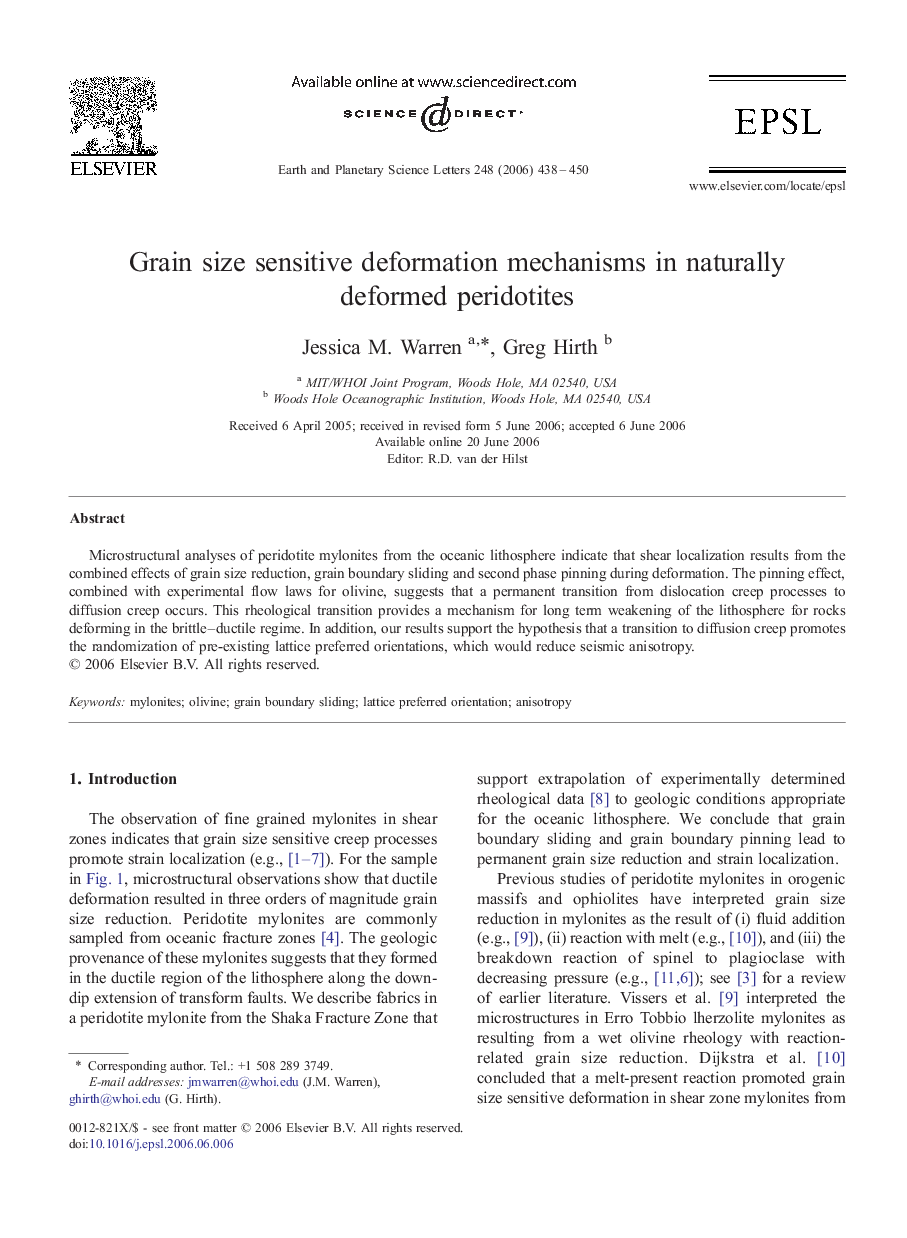| Article ID | Journal | Published Year | Pages | File Type |
|---|---|---|---|---|
| 4680845 | Earth and Planetary Science Letters | 2006 | 13 Pages |
Abstract
Microstructural analyses of peridotite mylonites from the oceanic lithosphere indicate that shear localization results from the combined effects of grain size reduction, grain boundary sliding and second phase pinning during deformation. The pinning effect, combined with experimental flow laws for olivine, suggests that a permanent transition from dislocation creep processes to diffusion creep occurs. This rheological transition provides a mechanism for long term weakening of the lithosphere for rocks deforming in the brittle–ductile regime. In addition, our results support the hypothesis that a transition to diffusion creep promotes the randomization of pre-existing lattice preferred orientations, which would reduce seismic anisotropy.
Related Topics
Physical Sciences and Engineering
Earth and Planetary Sciences
Earth and Planetary Sciences (General)
Authors
Jessica M. Warren, Greg Hirth,
